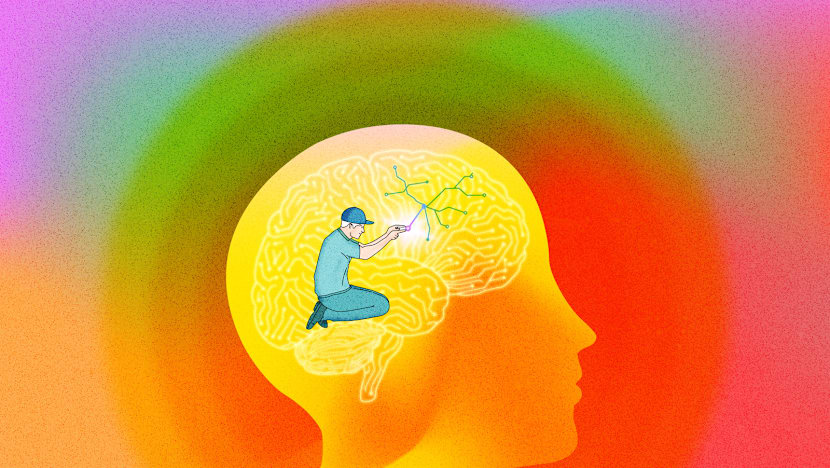Science
Science Explores Manifestation: Can Thoughts Shape Reality?

The concept of manifestation, popularised by social media platforms, suggests that focused thoughts and positive affirmations can lead to favourable outcomes in various aspects of life, such as career and relationships. While many proponents tout it as a transformative practice, critics often label it as pseudoscience. Recent insights from neuroscience and psychology provide a more nuanced understanding, demonstrating that while manifestation may not be magical, it is rooted in scientific principles that can influence behaviour and outcomes.
Understanding the Science Behind Manifestation
According to experts, practices associated with manifestation, such as visualisation and positive affirmations, activate the brain’s reward and motivation systems. Dr. Natasha Mitter, principal clinical psychologist at Us Therapy Singapore, explains that these techniques do not create magic but can trigger neural pathways that promote goal-directed actions. She states, “The brain is not static; it is shaped by repeated thoughts, behaviours, and emotional experiences.”
The work of the late Dr. James Doty, a clinical professor of neurosurgery, further supports this view. In his 2024 publication titled Mind Magic: The Neuroscience of Manifestation and How It Changes Everything, he noted that focused attention can alter the brain’s neural pathways, enhancing cognitive growth and potential.
Research indicates that when individuals engage in positive thinking, the areas of the brain linked to motivation, such as the ventral striatum and prefrontal cortex, become more active. Professor Annabel Chen from Nanyang Technological University highlighted that the ventromedial prefrontal cortex plays a critical role in self-affirmation tasks, connecting personal values with new goals. “When these regions work together, the brain assigns a higher motivational value to a goal, increasing the likelihood of taking concrete steps towards it,” she explained.
Practical Techniques and Their Effects
The application of visualisation techniques can be particularly effective. Dr. Liu from the Singapore Institute of Technology noted that imagining success activates similar brain regions as actual experiences, reinforcing the connection between thought and action. This technique is commonly used by athletes who mentally rehearse their performances to enhance their skills.
Importantly, the process of affirmation and visualisation is supported by neuroplasticity, the brain’s ability to reorganise itself by forming new neural connections. Repeated affirmations can lead to lasting changes in thought patterns. Dr. Mitter cautioned that while positive affirmations can strengthen beneficial neural connections, negative beliefs can similarly solidify harmful thought patterns.
Research has shown that individuals who regularly practice positive affirmations experience lower cortisol levels, suggesting improved stress management. This ability to regulate stress can enhance focus and motivation, particularly in high-pressure situations, such as academic environments or athletic competitions.
To harness the benefits of manifestation effectively, experts recommend setting realistic and actionable goals. Professor Chen stated, “If you believe a goal is realistic and important, your brain releases the right mix of motivation signals to help you stay focused.” Goals perceived as unattainable can lead to frustration and diminished motivation, underscoring the importance of incremental progress.
Using empowering language is also crucial. Dr. Mitter emphasised that affirmations should be specific and self-directed, focusing on what individuals can control rather than relying on external factors. Phrases like, “I can handle challenges,” are more effective than passive statements such as, “The universe will provide.”
The combination of verbal articulation and imagery can create a powerful mental imprint, further strengthening belief and motivation. Over time, consistent practice of these techniques can lead to changes in the brain’s default thinking patterns, effectively reshaping how individuals approach their goals.
Ultimately, while manifestation may not be a miraculous solution, it offers practical strategies rooted in science. “Thoughts activate networks that shape what we focus on, how we plan, and how much effort we invest,” Professor Chen stated. “True change occurs when thought translates into consistent, realistic action.”
The journey to lasting change requires time and dedication. With sustained effort and the right mindset, individuals can rewire their brains to foster positive thinking and behaviour patterns. As Dr. Mitter concluded, manifestation is not a mystical shortcut; it is “neuroplasticity in motion.”
-

 Lifestyle4 months ago
Lifestyle4 months agoHumanism Camp Engages 250 Youths in Summer Fest 2025
-

 Business4 months ago
Business4 months agoKenvue Dismisses CEO Thibaut Mongon as Strategic Review Advances
-

 Sports4 months ago
Sports4 months agoDe Minaur Triumphs at Washington Open After Thrilling Comeback
-

 Top Stories4 months ago
Top Stories4 months agoColombian Senator Miguel Uribe Shows Signs of Recovery After Attack
-

 Sports4 months ago
Sports4 months agoTupou and Daugunu Join First Nations Squad for Lions Clash
-

 Health4 months ago
Health4 months agoNew Study Challenges Assumptions About Aging and Inflammation
-

 World4 months ago
World4 months agoASEAN Gears Up for Historic Joint Meeting of Foreign and Economic Ministers
-

 Business4 months ago
Business4 months agoOil Prices Surge Following New EU Sanctions on Russia
-

 Entertainment4 months ago
Entertainment4 months agoDetaşe-Sabah Violin Ensemble Captivates at Gabala Music Festival
-

 Entertainment4 months ago
Entertainment4 months agoBaku Metro Extends Hours for Justin Timberlake Concert
-

 Business4 months ago
Business4 months agoU.S. House Approves Stablecoin Bill, Sends to Trump for Signature
-

 Top Stories4 months ago
Top Stories4 months agoRethinking Singapore’s F&B Regulations Amid Business Closures









